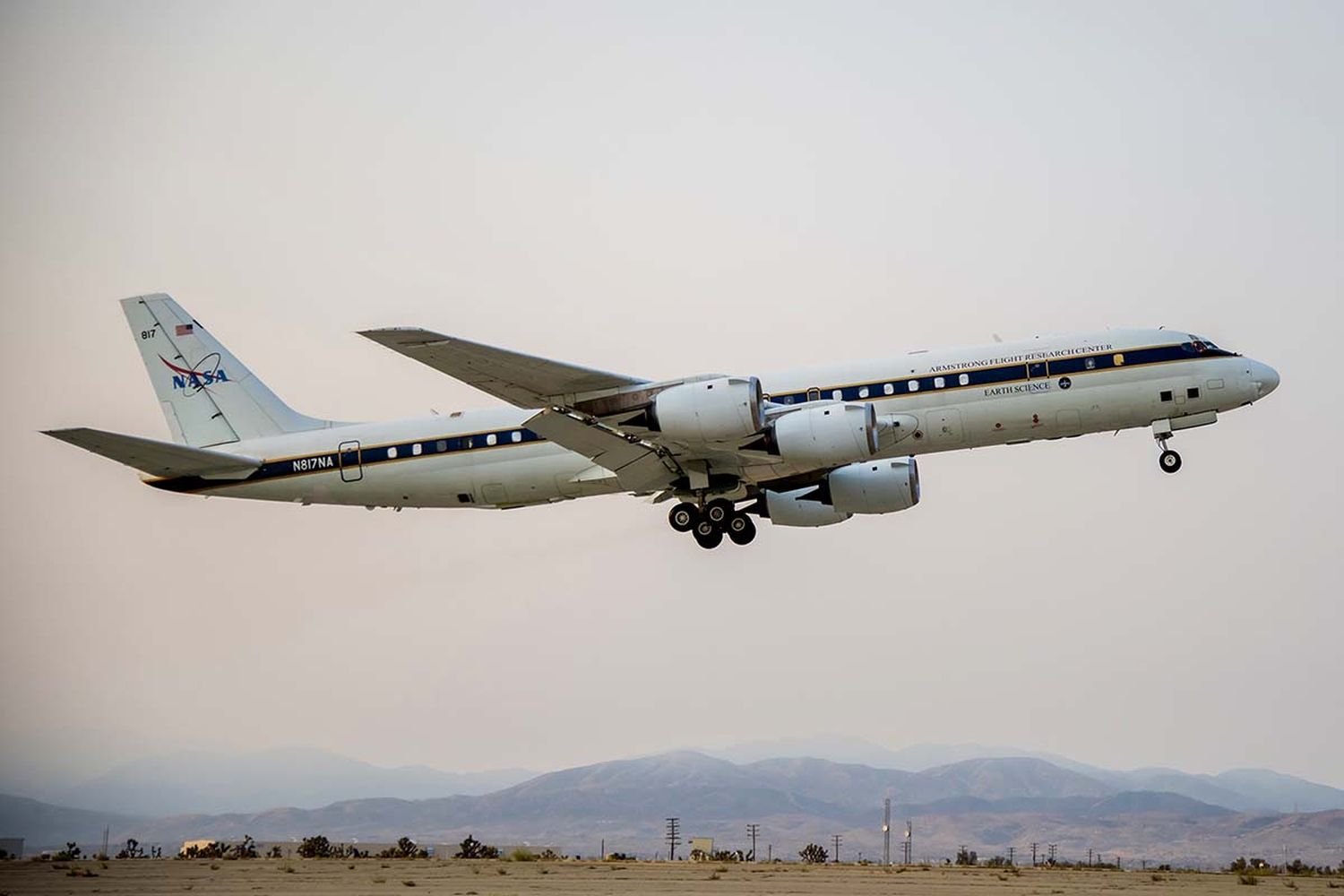A classic Douglas DC-8-72, with registration N817NA, from the National Aeronautics and Space Administration (NASA) was finally retired, concluding more than 50 years of service to different airlines and organizations. In its last stage, the aircraft was used for the collection of scientific data and the monitoring of the atmosphere.
This morning, the DC-8 landed at NASA’s Armstrong Flight Research Center in Palmdale, California, after a long mission in Asia-Pacific. Along with international researchers, the aircraft’s last mission for the US space agency was to examine air quality in Asia as part of a global initiative to better understand the air we breathe.
In collaboration with the Korea National Institute of Environmental Research (NIER), the Asia Air Quality Satellite and Airborne Research (ASIA-AQ) mission collects detailed atmospheric data in various locations in Asia.

Looking to the future and with the aim of continuing the scientific studies and atmospheric monitoring it currently conducts, in late 2022, NASA decided to acquire a Boeing 777-200ER that belonged to Japan Airlines for a value of USD 30 million.
It has serial number 32892/435 and was stored in Victorville (California) since May 2020. In December 2022, the aircraft flew with US registration N774LG to Langley Air Force Base, where it will be modified at NASA’s Langley Research Center.
Brief history of NASA’s DC-8
The DC-8-72, with registration N817NA/817, is a passenger aircraft modified for laboratory functions. It is used to collect data for experiments in support of projects that serve the world scientific community. It was built in 1969 and acquired by NASA in 1985.
The aircraft was produced at the Douglas factory located in Long Beach, California. It first flew in 1969, and was delivered to Alitalia under the registration I-DIWK and the name Giacomo Puccini.
After operating for ten years for the Italian company, it passed to Braniff International Airways between 1979 and 1982. The DC-8 was stored until 1984, when it was acquired by Quiet Nacelle Corporation, which also changed its iconic JT3D engines for the more efficient CFM56s.
Finally, in 1986, under the registration N801BA, NASA incorporated the DC-8 to conduct studies of the atmosphere, emissions of polluting gases and other similar experiments as its main missions.
The aircraft is expected to be exhibited in Idaho before ending up in a museum.


Comentarios
Para comentar, debés estar registrado
Por favor, iniciá sesión